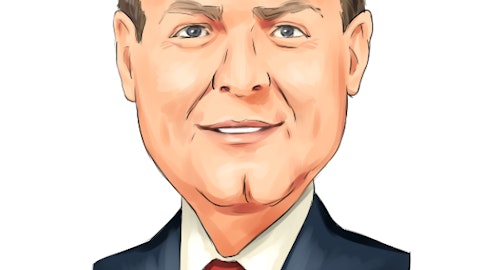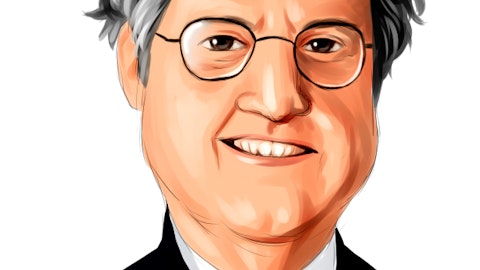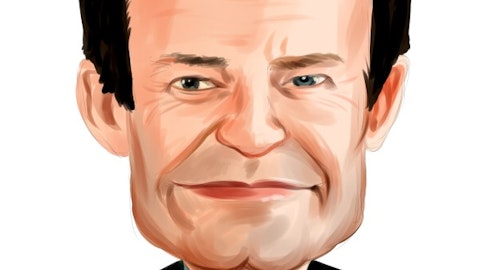Share repurchase, we’ve kind of pushed that about as far as we can, at least for now. Obviously, if liquidity picks up and trading volume picks up and the share price picks up, then obviously, you can — you will have the ability to buy back more. But as we sit here today, we kind of come by default to thinking that what we should focus on in the next year or 2 is deleveraging.
Devin Ryan: Yes. Okay. Good color. Just last one, just thinking about kind of growth opportunity. If you can just maybe give us a couple of maybe the biggest priorities as you look at your business today, where you feel like you really want to lean in investment or where you’re most excited about the ability to grow over the next couple of years?
Scott Bok: Sure. I think it’s — our focus — I mean, we have a lot of recruiting dialogues going right now. It’s a good market for recruiting talent. And I don’t mean people who lost their jobs on Wall Street, but people who are just — have been through a tough year, wherever they are and are considering a move most often from a big bank to a firm like ours. Our main focus is definitely the U.S. I didn’t answer your question actually earlier, you asked the second part of the question about geographic focus. We probably see the most near-term upside in the U.S., although I think the commodity focused markets of Australia and Canada, we are also quite positive on for the year ahead. And given that and given the fact that the U.S. market has proven really more resilient than the other markets in recent years, our recruiting will be, I think, mostly focused in the U.S. I think it will be mostly focused on M&A and mostly in people who add to our industry sector capabilities.
And in that regard, probably our biggest gaps in terms of where we have the most white space, I would say, our health care and . But I would also say that the industrial space, which has been a really good one for us in the area that we’re the most built out already, we think just kind of given the strength we have in that sector, that there are some additional subsectors that we’re not in today that we should pursue because it kind of fills out the industrial portfolio in terms of coverage. So that’s kind of how we are focusing our recruiting efforts today.
Operator: And our next question comes from Matt Moon from KBW.
Matthew Moon: So just looking at the quarterly comps that came in over the course of the year on compensation specifically. It looked like the nominal amount was relatively stable and consistent over the course of the year. I appreciate that, obviously, this will be dependent upon the revenue environment. But should we think about that quarterly run rate kind of in the low to mid-$40 million range on a quarterly basis being a decent floor as it relates to compensation as we look to the first several quarters of 2023.
Scott Bok: I wouldn’t want to be too specific on that because, as you said, compensation really is a function of revenue. And secondly, I would throw out that it’s also, to some degree, a function of recruiting and the higher the revenue is, the higher comp will be, the more successful we are in doing a lot of recruiting. And again, last year was a relatively quiet year for us in recruiting. We made some really important recruits but not as long a list as normal. Obviously, there’s some cost that goes with that as well. But I would take our history, including this year as a bit of a guide, but obviously in terms of absolute numbers. But clearly, we want to both increase the revenue by quite a lot, and we want to see our comp ratio go back to its target range. So I think that’s really about all I can — all the guidance I can give on that right now.





